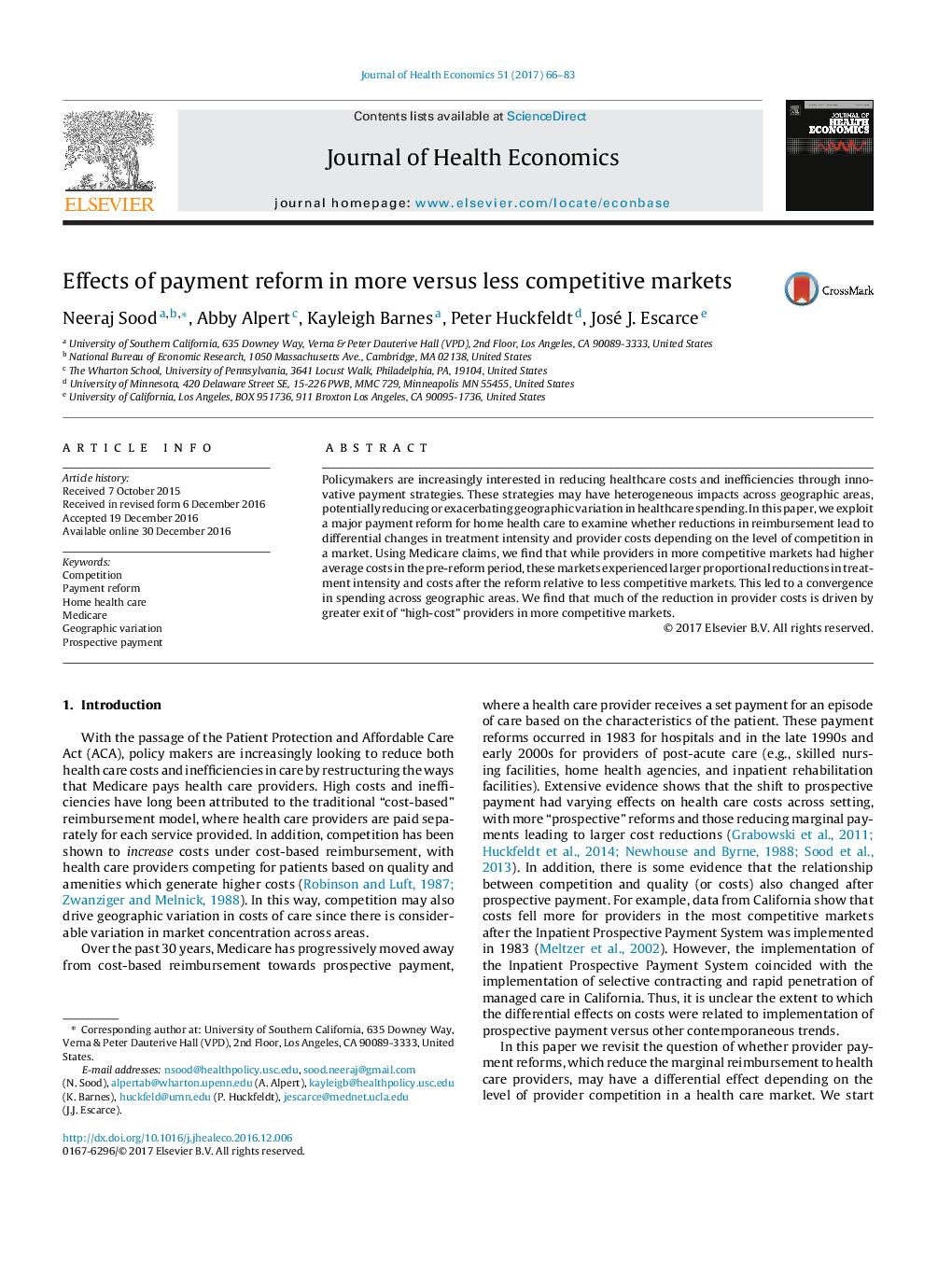| Article ID | Journal | Published Year | Pages | File Type |
|---|---|---|---|---|
| 5100787 | Journal of Health Economics | 2017 | 18 Pages |
Abstract
Policymakers are increasingly interested in reducing healthcare costs and inefficiencies through innovative payment strategies. These strategies may have heterogeneous impacts across geographic areas, potentially reducing or exacerbating geographic variation in healthcare spending. In this paper, we exploit a major payment reform for home health care to examine whether reductions in reimbursement lead to differential changes in treatment intensity and provider costs depending on the level of competition in a market. Using Medicare claims, we find that while providers in more competitive markets had higher average costs in the pre-reform period, these markets experienced larger proportional reductions in treatment intensity and costs after the reform relative to less competitive markets. This led to a convergence in spending across geographic areas. We find that much of the reduction in provider costs is driven by greater exit of “high-cost” providers in more competitive markets.
Related Topics
Health Sciences
Medicine and Dentistry
Public Health and Health Policy
Authors
Neeraj Sood, Abby Alpert, Kayleigh Barnes, Peter Huckfeldt, José J. Escarce,
